Restless and rebellious, scandalous and devoted, impulsive and brilliant: from 3 November Caravaggio talks to the cinema in a brand new film. Directed by Michele Placido, co-produced by the French Goldenart with Rai Cinema and distributed in Italy by 01 Distribution, The shadow of Caravaggio lands on the big screen with a cast of names well known to the public: from Riccardo Scamarcio, in the role of the artist, to Louis Garrel, who plays theShadow, the secret agent of the Vatican who will have over him the power of life or death, up to Isabelle Huppert, Micaela Ramazzotti, Vinicio Marchioni, Lolita Chammah, Moni Ovadia, Alessandro Haber and Placido himself in the role of Cardinal Del Monte. In this adventurous tale between history and imagination, a prominent part belongs to the immortal paintings of Caravaggio, and it could not be otherwise. We will recognize some of them in the painter’s workshop or in the palaces of wealthy clients, others – most of them – will materialize on the screen as tableau vivantto underline the revolutionary osmosis between art and reality with which Michelangelo Merisi upset the Rome of the time.
Finding them along the 120 minutes of the film will not be difficult, especially keeping in mind the small guide that follows. Here is the list of paintings complete with images.
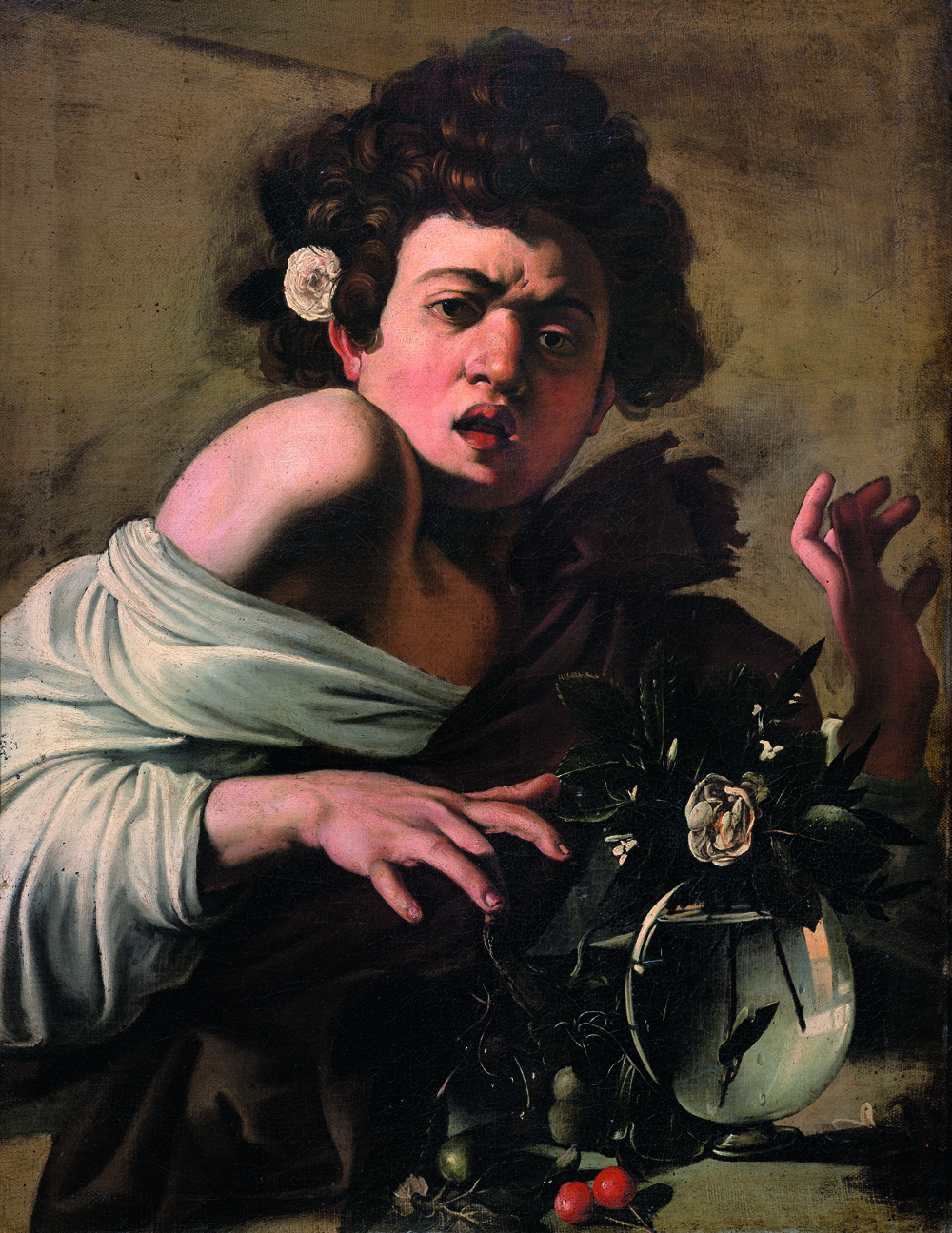
Michelangelo Merisi known as Caravaggio (Milan, 29 September 1571 – Porto Ercole, 18 July 1610), Boy bitten by a green lizard, about 1597, Oil on canvas, 65.8 x 52.3 cm, Florence, Roberto Longhi Foundation for the History of Art
Boy bitten by a green lizard
It is one of Caravaggio’s first masterpieces, which he made shortly after his arrival in Rome. Historians still argue about who was the client of the work, of which there are two versions: one owned by the National Gallery in London, the other preserved at the Roberto Longhi Foundation in Florence. The protagonist of the canvas is a young man with a rose in his hair, surprised by the reptile’s bite that suddenly appears from a beautiful still life with flowers, fruits and a vase full of water. A tremor shakes the limbs and the face of the boy, who contracts in an expression of pain. Some have recognized in the painting a complex web of symbols related to love and desire. Certainly it is indebted to Leonardo’s studies on the motions of the soul, while he directly quotes a precious charcoal drawing made by Sofonisba Anguissola about 40 years earlier, entitled Child bitten by a shrimp.
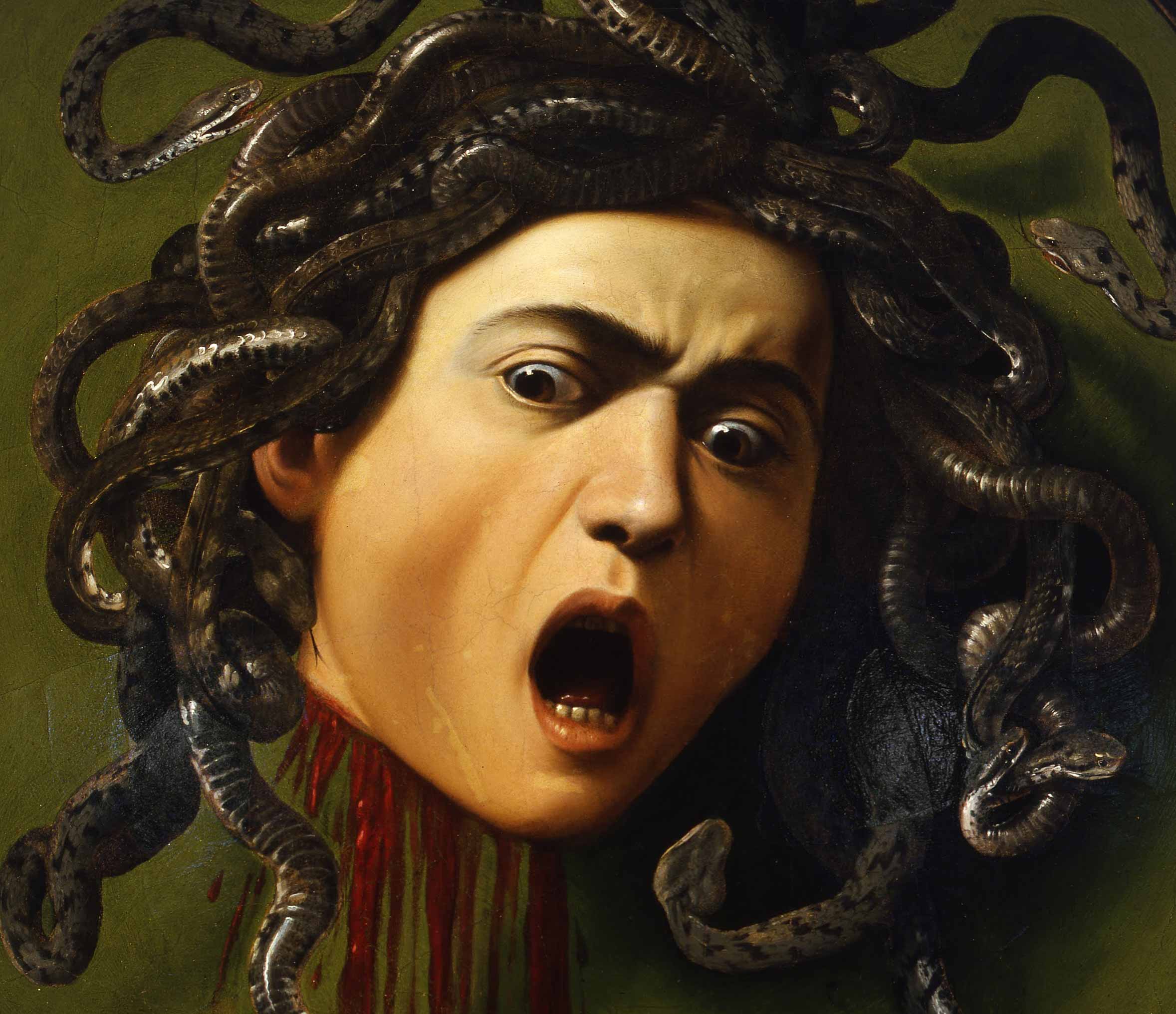
Michelangelo Merisi da Caravaggio, Shield with the head of Medusa, 1598 ca., Uffizi Gallery, Florence
Shield with the head of Medusa
An expression of horror is painted on the face of Medusa cut off by Perseus: the mouth wide open in a scream, the hallucinated eyes, the blood that comes out in a gush from the severed neck, the snakes waving on the monster’s head describe the culminating moment of the Greek myth. Beyond appearances, it seems that once upon a time the image of the Gorgon was good, as a symbol of prudence and wisdom. Caravaggio was still young when he painted it, but he managed to create an extraordinary work. With masterful use of the lights he canceled the convexity of the support, a wooden shield, giving the impression that his head was floating on the dark green background. There are also two versions of this work, both made by Merisi: the first is kept in an Italian private collection, the second is in the Uffizi. To personally hand it over to Ferdinando de ‘Medici in 1898 was Cardinal del Monte, who with a subject much loved by the lords of Florence wanted to show the Grand Duke the artistic skills of his protégé.
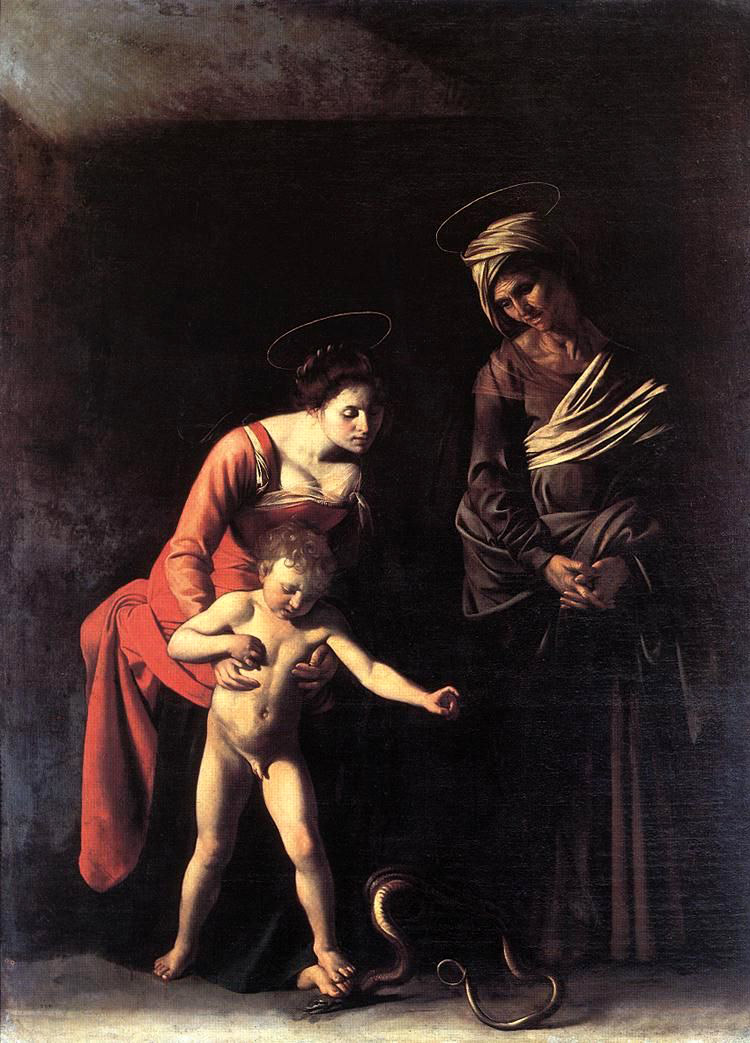
Michelangelo Merisi da Caravaggio, Madonna of the Palafrenieri, 1605-1606, Rome, Galleria Borghese
Madonna of the Palafrenieri
Today it appears simply as a masterpiece but, as with many of Caravaggio’s works, at the time of its creation this painting was at the center of heated controversy. Initially intended for the Basilica of San Pietro, and precisely for the chapel of the grooms, Roman patricians who enjoyed the privilege of leading the pope’s donkey and white horse by the reins, the canvas was refused with great clamor. How come? From the theological dispute over who, between the Virgin and the Child, should crush the diabolical serpent, to Mary’s uncovered breast, up to the disputes over the appearance of Saint Anne (the protector of grooms), there was no lack of pretexts. And the Romans must not have missed one last detail: the Madonna incredibly resembled Maddalena Antognetti known as Lena, model and friend of Caravaggio with a controversial reputation. Incidentally, Lena had a son about the age of the Child depicted in the painting, which commentators judged too grown to show her nakedness. Someone, however, liked the painting: the one who took advantage of the refusal was the great collector Scipione Borghese, who according to the most malicious, fueled the controversy to get hold of it.
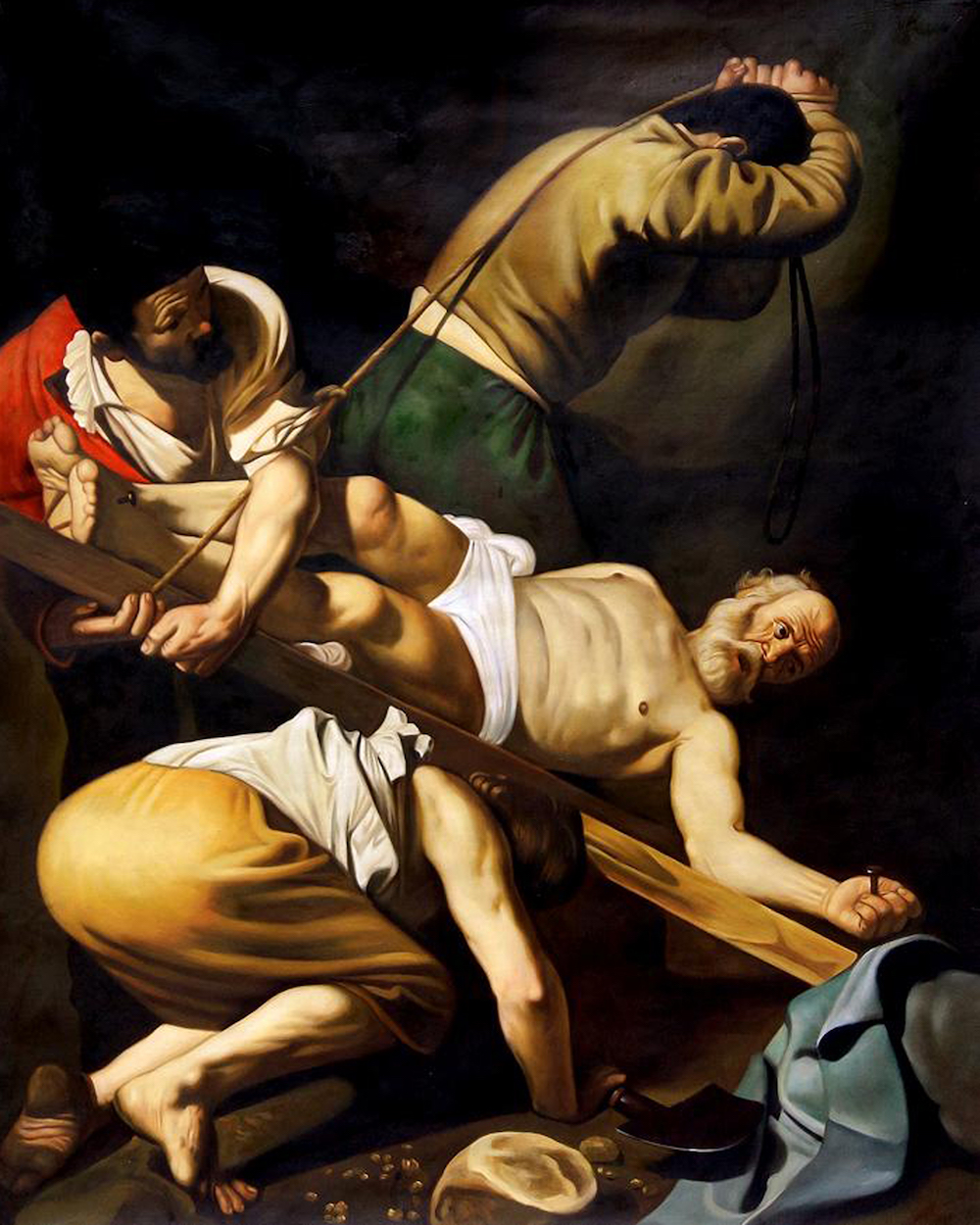
Michelangelo Merisi da Caravaggio, Crucifixion of St. Peter, Cerasi Chapel, Santa Maria del Popolo, Rome
Conversion of Saint Paul and Crucifixion of Saint Peter
On 24 September 1600 Caravaggio was commissioned by Monsignor Tiberio Cerasi to create two large paintings on wood for the chapel where he will be buried, in the Roman church of Santa Maria del Popolo. The artist sets to work and in a short time finishes the work. But the chapel is not yet ready and the prelate will soon pass away. The matter will become more tangled: today, in fact, in the Cerasi Chapel there are yes two Caravaggio depicting the Conversion of Saint Paul and the Crucifixion of St. Peter, as ordered by the monsignor, but they are not those seen by Cerasi. What happened in the meantime? Perhaps it was the artist himself who changed the program. The paintings we admire in Santa Maria del Popolo are two extraordinary examples of Merisi’s pictorial innovations: the expressive treatment of light, the realism with which the characters are portrayed, the compositional dynamism of Crucifixion and, on the contrary, the dramatic static nature of the Conversion they speak to us of a mature pictorial language, ready to leave its mark on history.
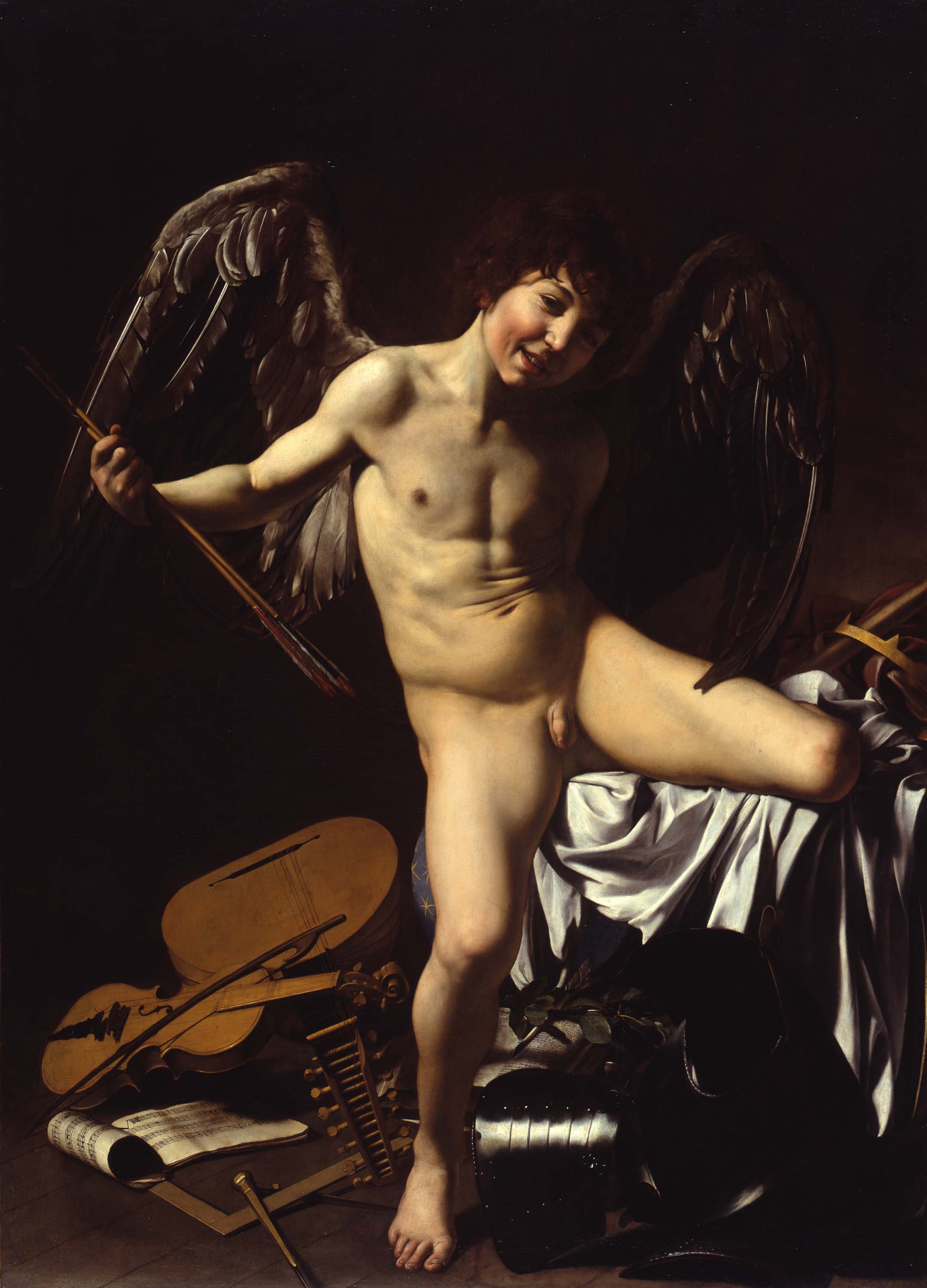
Michelangelo Merisi da Caravaggio, Amor vincit Omnia, Gemäldegalerie, Staatliche Museum, Berlin
Amor vincit omnia
“Love triumphs over everything”, says the title of this painting preserved at the Staatliche Museum in Berlin, quoting a passage from Virgil. The client Vincenzo Giustiniani, a wealthy collector of Genoese origins and historical patron of Caravaggio, showed it only to selected guests. For the rest of the time, the irreverent image of Cupid remained covered by a green cloth: considering it to be the best picture of the collection, Giustiniani maintained that with his beauty he would overshadow the others. Posing for Caravaggio in the Berlin canvas was Francesco Boneri known as Cecco, his favorite pupil (and lover, according to some), dressed only in a pair of eagle wings lent to the painter by his friend Orazio Gentileschi. At the boy’s feet we recognize the symbols of the arts and sciences defeated by Love, primarily music and astronomy, two passions of the Marquis. Unconventional and mischievous, the painting testifies to the intellectual openness of Giustiniani, one of the most cultured characters in Rome of the time.
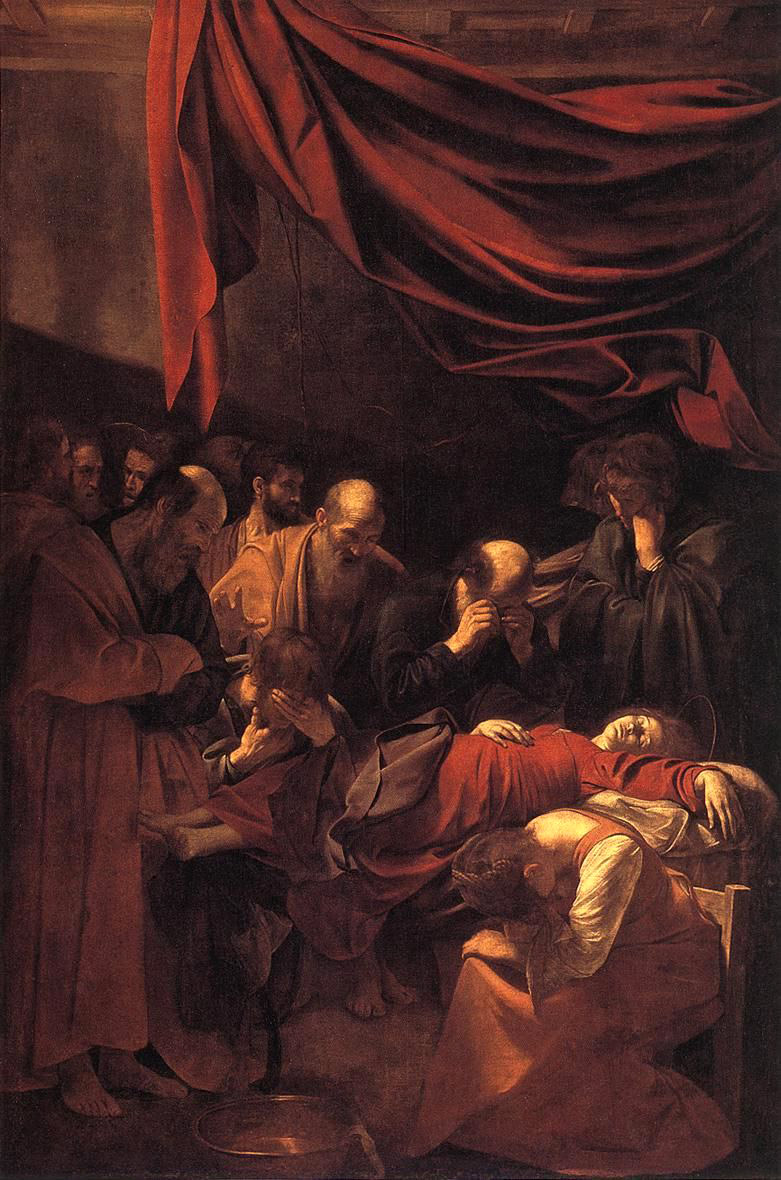
Michelangelo Merisi da Caravaggio, Death of the Virgin. Paris, Louvre
Death of the Virgin
The last work painted in Rome by Caravaggio was also the most scandalous. Commissioned by the lawyer Laerzio Cherubini for his chapel in Santa Maria in Trastevere, the large altarpiece sets the scene of Mary’s death in a poor and bare room, where a scarlet cloth similar to a curtain rises revealing the body of the Mother of God badly composed on a makeshift bed. Dressed in red and not black as prescribed by tradition, Maria has a swollen belly, a livid face, bare feet and untidy hair. It seems that Merisi used the corpse of a prostitute drowned in the Tiber as a model to paint it. For the Discalced Carmelites, responsible for Santa Maria in Trastevere, it was really too much. The canvas was refused, but immediately found a new buyer: the Duke of Mantua Vincenzo I Gonzaga, well advised by Rubens who had immediately recognized the masterpiece. Later the painting entered the collections of Charles I of England and then of the king of France Louis XIV. Today it is in the Louvre.
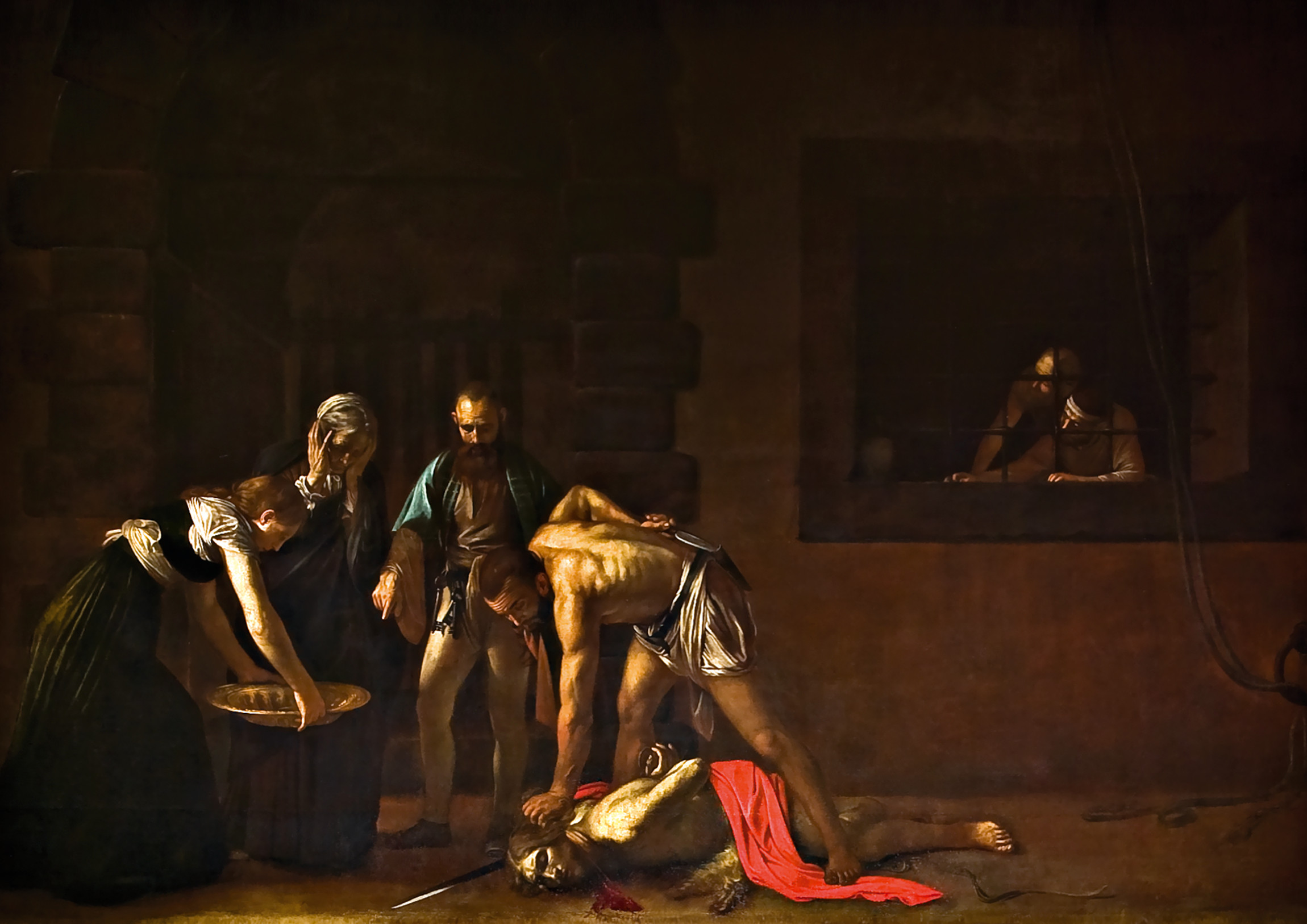
Michelangelo Merisi da Caravaggio, Beheading of St. John the Baptist, 1608, Oil on canvas, 520 x 361 cm, Valletta, Co-Cathedral of St. John
Beheading of St. John the Baptist
Fleeing the death sentence by beheading that hung over his head for the murder of Ranuccio Tommasoni, Caravaggio arrives in Malta: his goal is to become a knight of the Order of Jerusalem, which would guarantee him immunity. And it is precisely for the Order that he paints the most imposing canvas of him (about three and a half meters by five), still preserved in the Co-Cathedral of San Giovanni in Valletta. Unlike usual, in this painting the relationship between figures and space is reversed in favor of the latter, just as the representation of the Gospel episode is unusual. In fact, Caravaggio chooses to focus on the moment immediately preceding the beheading of the saint, to whose fate he feels close for obvious reasons. The scene takes place in a prison, where the torturer who has just killed the Baptist is about to behead him with the mercy, the dagger that was used to finish off wounded opponents. Between lights and shadows of extraordinary evocative power, the inscription “f. Michel Ang. ”, Or Caravaggio’s signature preceded by the title“ fra ”, the nickname given to the Knights of Malta.
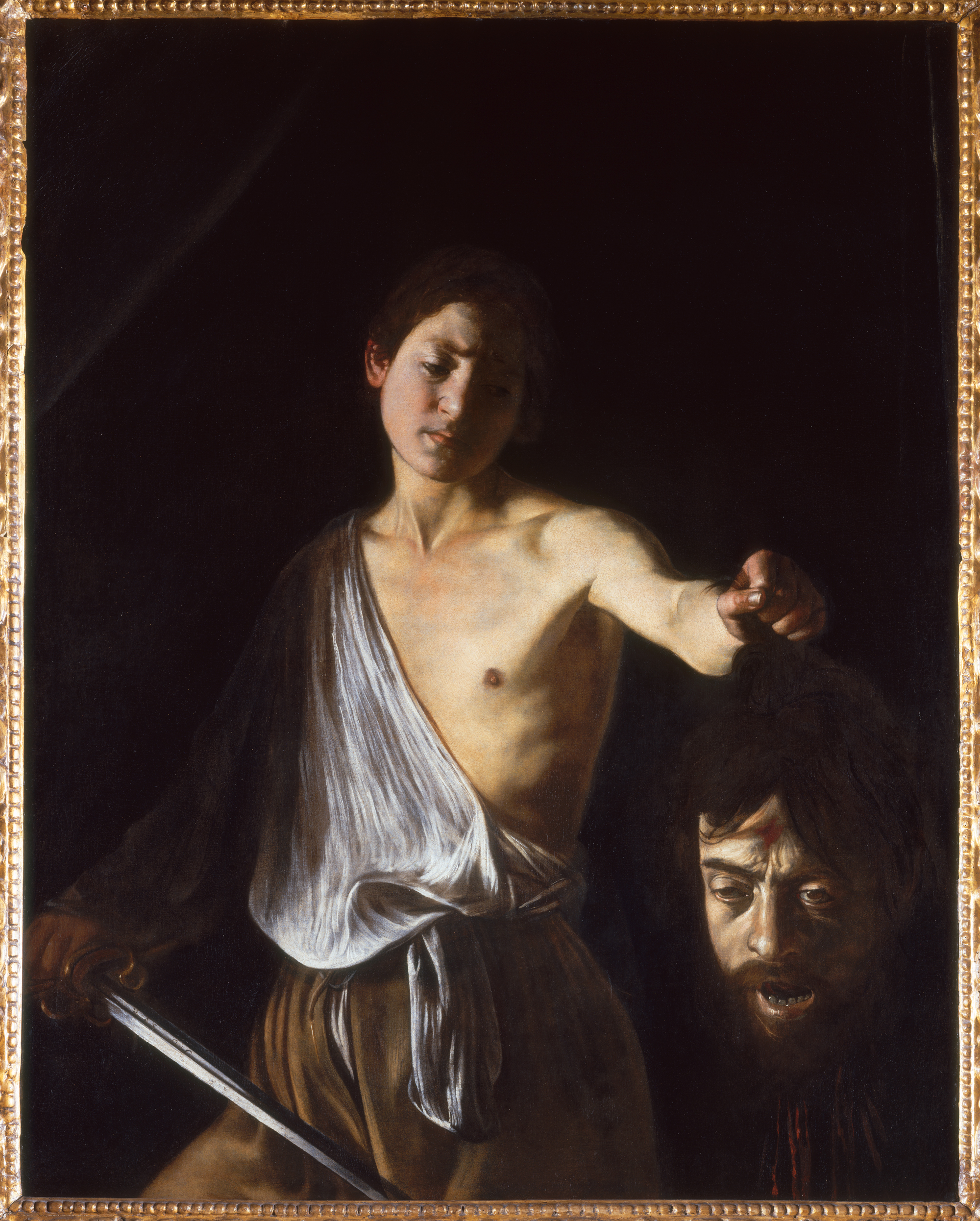
Michelangelo Merisi da Caravaggio, David with the head of Goliath, 1609-1610, Olo on canvas, 100 x 125 cm, Rome, Galleria Borghese
David headed Goliath
When he painted this picture, Caravaggio was in Naples, fleeing Rome where a murder charge hung over his head. After choosing the subject independently, the painter entrusted the painting to Cardinal Scipione Borghese, as a gift to be delivered to Pope Pius V to obtain forgiveness and finally return home. The painter is tired and aged: we see him in the face of Goliath, in which he would have depicted his own self-portrait. According to some scholars, the self-portraits present in the painting would even be two: in David the artist would have represented himself as a young man, not yet touched by sin. The gift, in any case, was only half effective: the pardon was granted but Caravaggio, almost at the end of the journey to Rome, died on the beach of Porto Ercole in circumstances never clarified.
Read also:
• Riccardo Scamarcio is Caravaggio in the new film by Michele Placido

